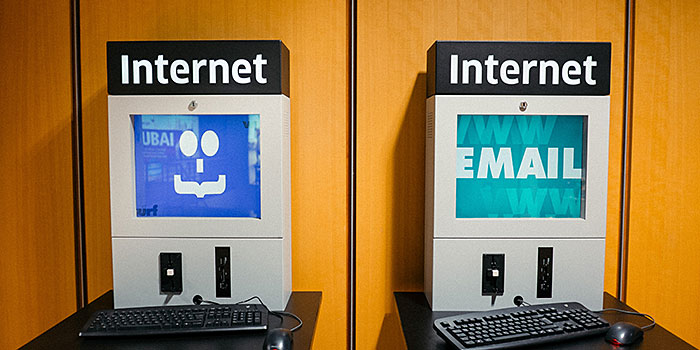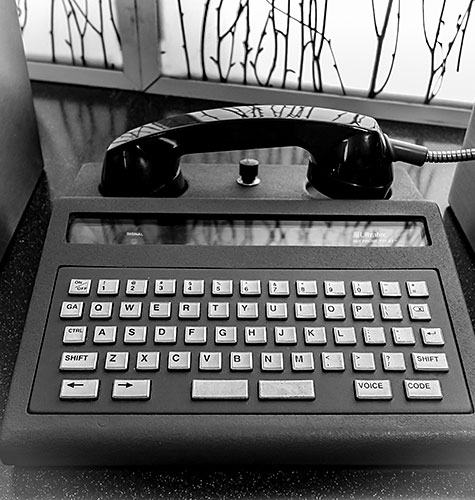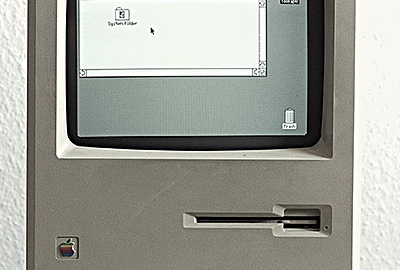 2022-05-09
2022-05-09
-
Home /
-
Technology /
-
Creation of the Internet

History of the Internet
- ArticlesandContent.com (CIRCA 2005)
- /
- Oct 8, 2021 (written 2005)
Our society now relies on computers and the Internet so much so that, if they were gone, we would be in a panic trying to figure out how to live without them once again (or for the first time for some of us).
It would also mean ruin for many small businesses that do business exclusively through this method of communication. Like numerous inventions before it, the Internet has enabled our society to grow and prosper in many new ways since its inception.
The question of who actually invented the Internet is a tricky one, since it spawned from several separate programs that were invented and in use by different governments and government organizations. As it was, in the United States anyway, commercial use of the Internet was banned and its only use was for university and government personnel to communicate, research, and learn. The Internet has a rich technical history that was born from many different parts. However, since most of us aren’t that technical, here is an overview of the Internet from when it came about to how we know it today.
In the beginning, there was the ARPANET and, around the same time, NSFNet. The ARPANET, since it was government funded, was used primarily by the military, learning institutions, and government funded research facilities. In the early 1980s the National Science Foundation began its own research to build a better system that would replace the ARPANET. This research led them to the construction of the NSFNet, which used the first Wide Area Network (WAN) to send communication between computers. The ARPANET and the NSFNet together became know as the Internet.
In 1991 those working at the University of Minnesota developed a “Gopher” system. Gopher was an easy to navigate menu system that required only a click of the mouse for a person to find the menu selection they wanted. This is important because before this system was created those who wanted to use the Internet had to learn a very complex structure to find what they where looking for. The Gopher system was such a great addition to this technology that 10,000 like it had popped up around the world within just a few short years and it inspired new innovations in the industry.
People researching the Gopher menu technology at the University of Nevada at Reno decided to expand on this new system. They used the idea of Gopher menus to build VERONICA (an acronym for Very Easy Rodent-Oriented Netwide Index to Computerized Archives), which was an index of all the Gopher menus around the world that you could search to find the one you wanted. VERONICA used a spider to crawl these Gopher menus and collect links for the index. This made all available Gopher systems accessible to an individual at the same time. VERONICA was what we know now as a search engine, although the search engines of today are more complex in how they spider websites.
Although there were many technological advances in the late 1970s and throughout the 1980s, it would still take until 1992 for ARPANET and NSFNet to get their first real competition and for the first dial-up Internet Service Provider to become available. That competition was the company called Delphi. Delphi, being the first commercial online service accessible to regular subscribers across the nation, unveiled e-mail access in July 1992 and full Internet access in November 1992.
Having a dial-up ISP made accessing the Internet more affordable for others besides government, universities, and large companies. Once the leaders in Internet technology, by 1990 ARPANET was pretty much wiped out and the same thing happened to NSFNet by 1994 as the two companies just could not keep up with new, competing technologies. It was also around this time that any remaining commercial restrictions that were still in place regarding the Internet were brought to an end.




By 1995 the Internet Service Provider fight had grown with America Online, Prodigy, and CompuServ all entering the ring. This brought good things for consumers, as each of these companies was competing for their money. Many started offering slightly lower prices or better services, such as message boards and chat rooms to connect with other users, free web pages, and additional screen names allotted to each subscriber. Over time, as the big providers had to keep prices around the $20-$25 mark to keep up with all of their extras, it opened the door for “bare bones” providers (think PeoplePC) to sweep many customers away with cheap prices in exchange for Internet-only access.
This was strengthened by the fact that now, instead of regular dial-up, high-speed dial-up and cable or DSL modems were being introduced into people’s homes. Once reserved for learning institutions, big corporations, and government facilities, high-speed Internet access was being offered in large cities across the nation for regular consumers. Since this made dial-up less appealing, it began to drive down the cost (which has been as low as $6 per month during promotional specials) and open up the world of the Internet for even those who could not afford it at $20+ a month.
As it stands now, the Internet is a part of our everyday lives. Many people run small businesses from their own home, and we use it to keep in contact with friends and relatives on a regular basis. We can use the World Wide Web to research and learn new information, or to build our own personal web page or blog. In just a few short decades the Internet and its systems have grown to mammoth proportions in our society both socially and economically. It makes one wonder what is next for this amazing technology. No matter what the answer to that question may be, we know that no matter what comes next, using this technology will make connecting with people, accessing needed information, or running a small business easier for many.




